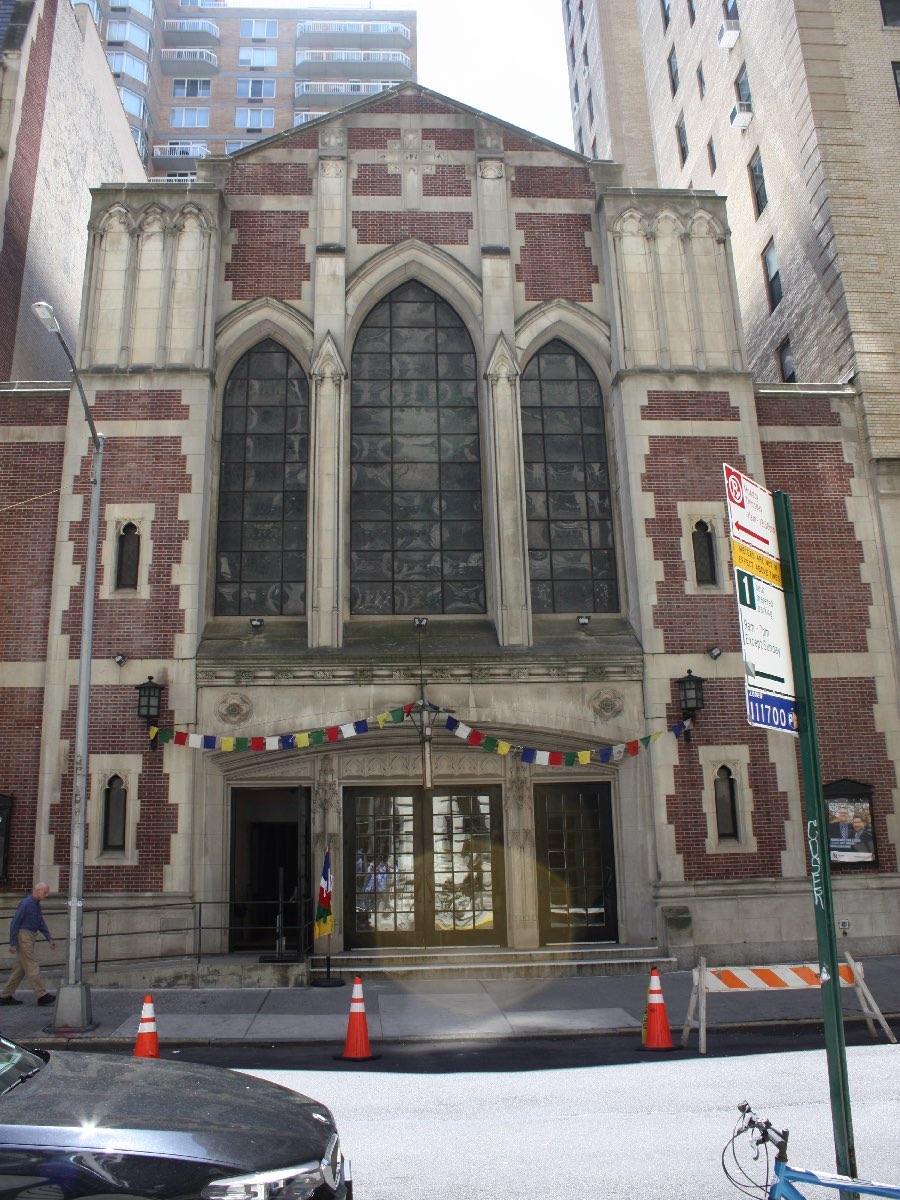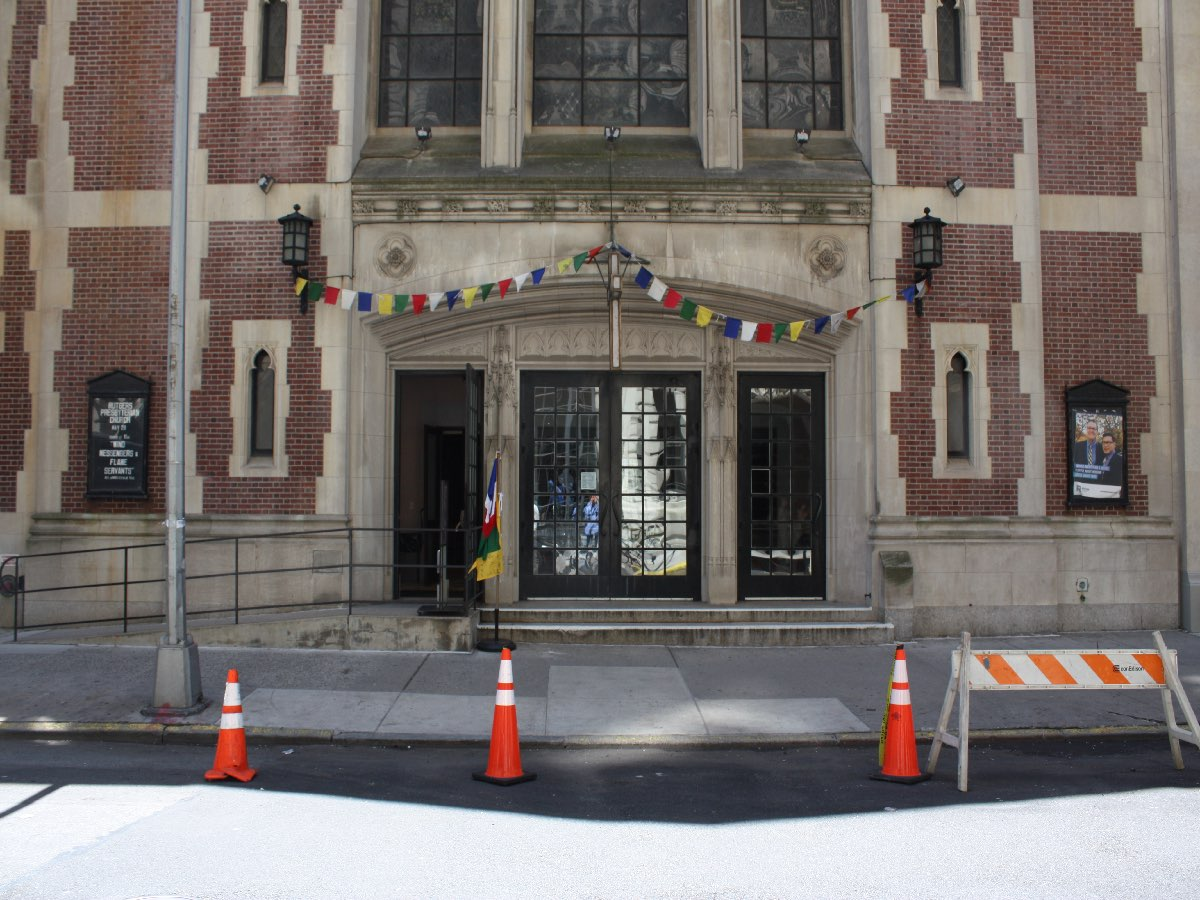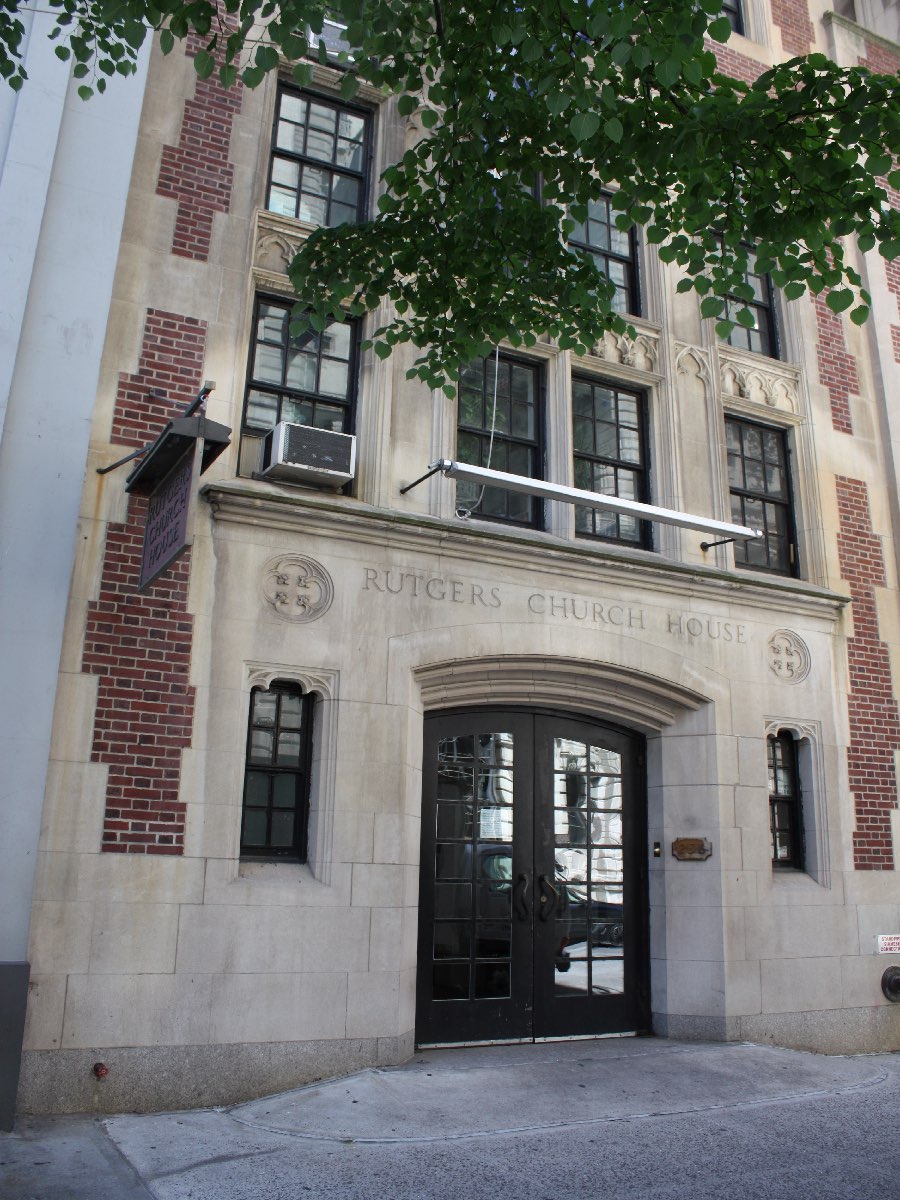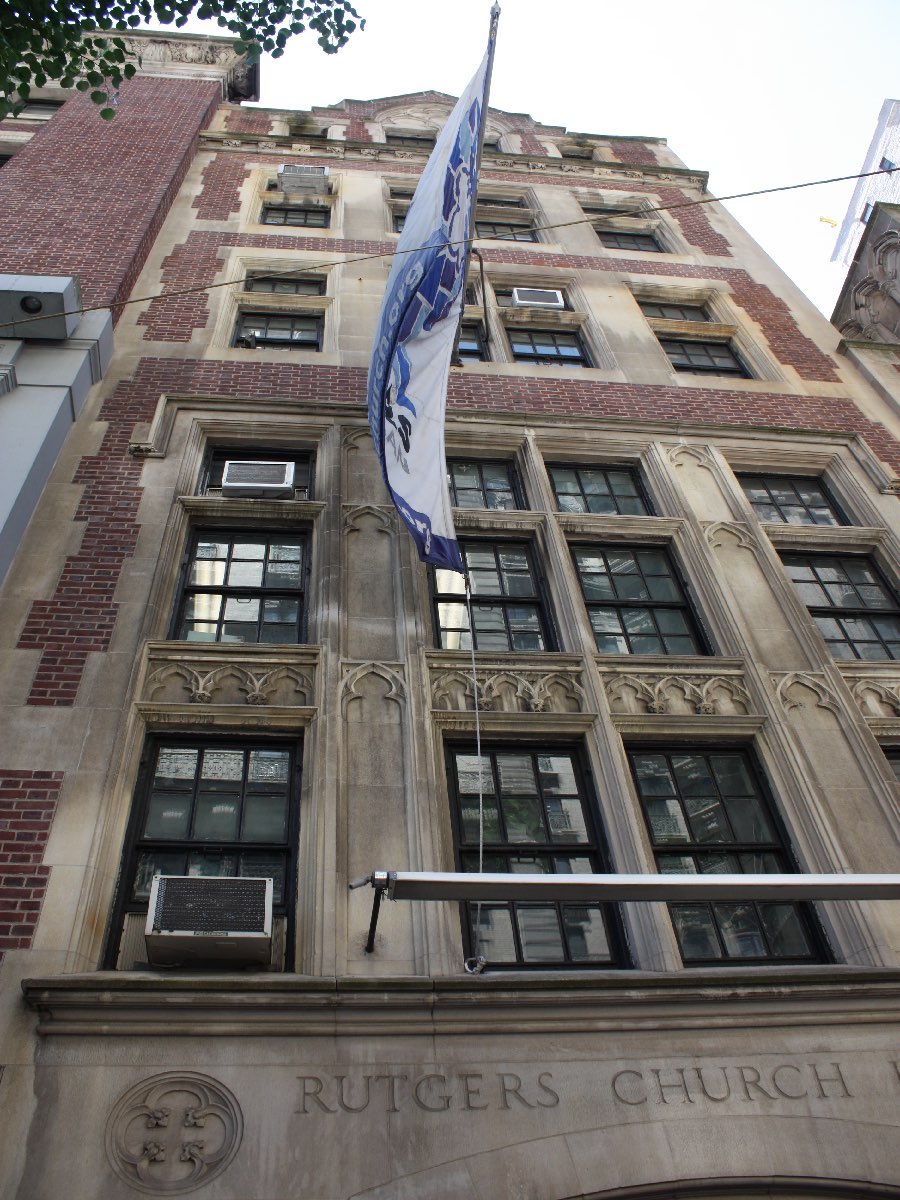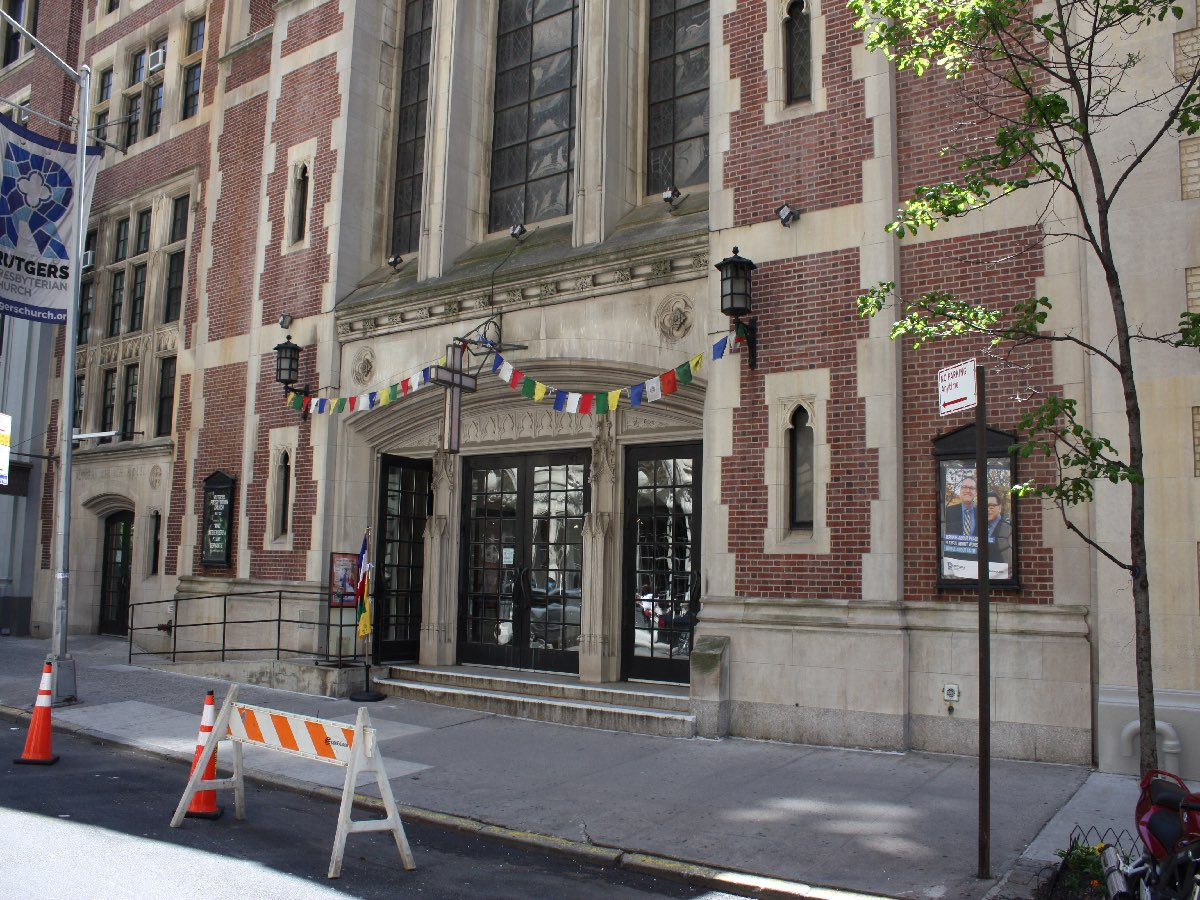236 West 73rd Street
Rutgers Presbyterian ChurchDate: 1921-1926
NB Number: NB 85-1924
Type: Church and Religious
Architect: Chapman, Henry Otis
Developer/Owner/Builder: Rutgers Presbyterian Church
NYC Landmarks Designation: Historic District
Landmark Designation Report: Addendum to the West End-Collegiate Historic District Extension Designation Report
National Register Designation: N/A
Primary Style: Gothic Revival
Primary Facade: Brick, Granite, Limestone, Red Brick, and Terra Cotta
Stories: 2
Historic District: West End-Collegiate HD Extension
Special Windows: Double-height, pointed-arched window openings at second story Significant Architectural Features: Slightly recessed, peaked central mass, detailed in red brick and limestone, flanked by stylized towers capped with terra cotta; large, molded, segmentalarched opening at main entry and double-height, triple-pointed-arched windows at second story; limestone and terra-cotta details including molded door and window surrounds and Neo-Gothic detailing evident in tracery, engaged pilasters, Gibbs surrounds, roundels with floral details, a molded cornice above the first story, and a inset cross at the gable; possibly original multi-paned sashes at second-story windows; granite base trim.
Alterations: Hanging electric cross sign at main entry dates to at least c. 1980s tax photograph; signboxes affixed at eastern and western ends of elevation date to at least c. 1980s tax photograph; light fixtures flanking main entry date to at least c. 1980s tax photograph; lights at second-story windows (after c. 1980s tax photograph).
Building Notes: Building under netting at time of designation.
Site Features: Two-step concrete stoop at main entry, altered at eastern end with concrete ramp with non-historic metal handrail Notable
History and Residents: Rutgers Presbyterian Church, like the State University of New Jersey, is named for Colonel Henry Rutgers, a Revolutionary War Soldier and Lower East Side farmer. Rutgers had given a parcel of his farm at Rutgers and Henry Streets to the First Presbyterian Church for an adjunct congregation called the Rutgers Street Church (1797-98). This building was replaced by a new building in 1841-42. In 1863, the congregation moved uptown to a new building constructed at 90 Madison Avenue. In 1888, Rutgers opened a chapel by R.H. Robertson on West 73rd Street, which it called Rutgers Riverside. Only two years later, the chapel was followed by a more substantial building that extended to Broadway. Soon afterwards, the church leased its Broadway frontage to the United States Mortgage & Trust Company, which financed construction of a new office building on Broadway (not part of this district), a new church building, and an adjacent church house. Construction of the new, modest, mid-block sanctuary and church house, designed by Henry Otis Chapman, lasted from 1921 to 1926. The minister at the time characterized the real estate transaction as “no more than a question of putting real estate values, which are laying idle, to work for the kingdom of God.” Rutgers merged in 1942 with the Harlem-New York Presbyterian Church.
Adapted from: David W. Dunlap, Abyssinian to Zion: A Guide to Manhattan’s Houses of Worship (Columbia University Press: New York, 2004) 186.
North Facade: Designed (historic, repointed). Stoop: Altered. Door(s): Replaced primary door; secondary doors flanking main entry also replaced. Windows: Possibly original. Roof: Possibly original (pitched – materials not determined (only partially visible from street); masonry coping at west 73rd street gabled end). Notable Roof Features: Gabled roof with front-facing gable on West 73rd Street. Sidewalk Material(s): Concrete. Curb Material(s): Concrete and metal.
East Facade: Partially designed (historic) (partially visible).
West Facade: Partially designed (historic) (partially visible).

